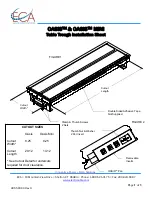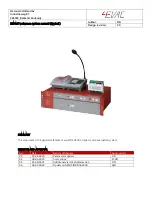
Spectrum Analysis
R&S
®
Scope Rider RTH
118
User Manual 1326.1578.02 ─ 12
9. To perform statistical evaluation of the spectrum results, select one of the evalua-
tion modes.
For averaging, define the number of values to be considered.
10. Select the "Vertical" menu.
11. Define the unit in which the magnitude values are indicated.
12. Define the "Reference Level" as the highest expected input level.
13. To start and stop spectrum analysis, press the [RUN STOP] key.
14. To determine peaks in the spectrum:
a) Select the "Marker" menu.
b) Set the "State" to "On" to enable a peak search.
c) Define the number of markers as the maximum number of peaks to be detec-
ted.
d) Define the "Threshold", "Excursion", and "Distance" to configure the peak
search.
e) Select one of the displayed traces to be used as the source of the peak search.
f) Select whether the marker values are indicated as absolute values or relative
to the reference (highest) peak.
15. To determine the frequency or level values, or both, at specific points in the spec-
trum, enable the spectrum track cursors:
a) Select the "Cursor" menu.
b) Set the "State" to "On" to display the cursors.
c) Select one of the displayed traces to be used as the source of the track cur-
sors.
d) Select whether the values are indicated as absolute values or as the difference
between the two cursors ("Delta").
e) Drag the cursors to the required positions in the spectrum.
The levels and frequencies of the cursors at the crossings with the spectrum
are indicated at the top of the diagram.
f) To keep the cursors at a fixed distance to one another, enable the "Coupling"
option.
g) To keep the cursors at a fixed (relative) distance to the spectrum, regardless of
the current scaling, enable the "Track Scaling" option.
6.2.4
Spectrum Mode Settings
Access
: "Spectrum" menu
Spectrum Mode (Option R&S
RTH-K18)
















































